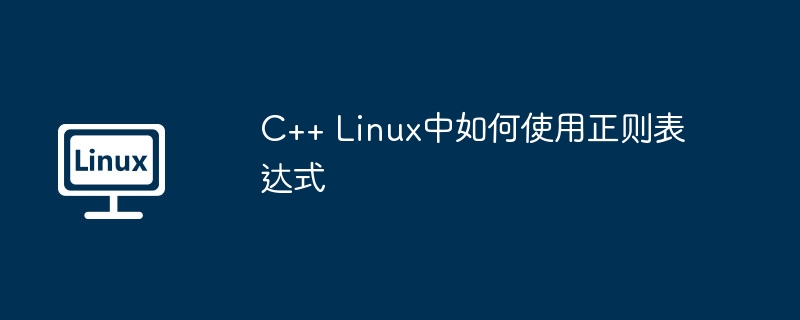
本文将演示如何在Linux环境下的C++程序中运用正则表达式。 需要确保你的编译器支持C++11或更高版本,因为我们将使用<regex></regex>库。
以下代码片段展示了如何匹配一个或多个数字:
<code class="c++">#include <iostream>
#include <string>
#include <regex>
int main() {
// 正则表达式模式
std::string pattern = R"(\d+)"; // 匹配一个或多个数字
// 待匹配文本
std::string text = "Hello, there are 123 apples and 456 oranges.";
// 创建正则表达式对象
std::regex regex(pattern);
// 使用std::sregex_iterator迭代匹配结果
auto words_begin = std::sregex_iterator(text.begin(), text.end(), regex);
auto words_end = std::sregex_iterator();
int count = 0;
for (auto it = words_begin; it != words_end; ++it) {
std::smatch match = *it;
std::cout << "Found number: " << match.str() << std::endl;
count++;
}
std::cout << "Found " << count << " numbers in the text." << std::endl;
return 0;
}</code>编译运行该程序:
使用g++编译器,并指定C++11标准:

perl 是类UNIX系统管理的一个利器,维护系统如果不会Perl,最少也应该弄熟SHELL,两者都能得心应手当然最好。 Perl是一种脚本语言。 最初的设计者为拉里·沃尔(Larry Wall),它于1987年12月18日发表。Perl借取了C、sed、awk、shell scripting 以及很多其他编程语言的特性。其中最重要的特性是他内部集成了正则表达式的功能,以及巨大的第三方代码库 CPAN。 Perl原名pearl,但是在这个语言官方发表前,拉里·沃
 0
0

立即学习“C++免费学习笔记(深入)”;
<code class="bash">g++ -std=c++11 -o regex_example regex_example.cpp ./regex_example</code>
输出结果:
<code>Found number: 123 Found number: 456 Found 2 numbers in the text.</code>
<regex></regex>库功能强大,支持多种正则表达式操作,例如字符串替换和分割。 更多细节请参考C++标准库文档。
以上就是C++ Linux中如何使用正则表达式的详细内容,更多请关注php中文网其它相关文章!

每个人都需要一台速度更快、更稳定的 PC。随着时间的推移,垃圾文件、旧注册表数据和不必要的后台进程会占用资源并降低性能。幸运的是,许多工具可以让 Windows 保持平稳运行。

Copyright 2014-2025 https://www.php.cn/ All Rights Reserved | php.cn | 湘ICP备2023035733号